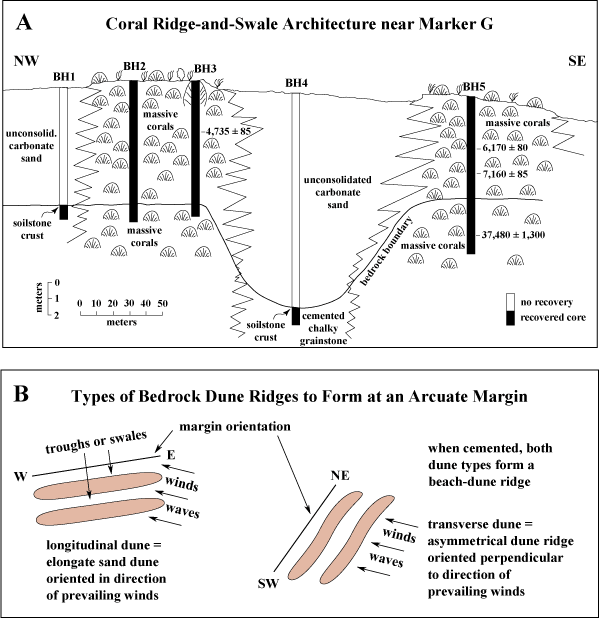FISC - St. Petersburg
Figure 79. (A) Cross section of core transect across two rock ridges inshore from Marker G in the lower Keys (from Shinn et al., 1977a). Core recoveries showed the ridges are coralline, grew vertically, and are separated by a sediment-filled swale. Lateral dimensions of the ridge-and-swale architecture are in the tens of meters. Note conventional radiocarbon ages of corals. The 37,480±1,300 age (calendar years before present) obtained on a recrystallized coral was believed to be much too young. True age of the bedrock coral sections is inferred from other types of evidence to date to marine-isotope substage 5a (between ~86 and 75 ka, Fig. 80; Lidz, 2004). (B) Cemented beach-dune ridges are thought to underlie the coral-rock ridges shelf-wide. Sketch shows how beach dunes would form along an arcuate margin with energy prevailing from a southeasterly direction. Dredged sites through coral-rock ridges seaward of Bal Harbor, located north of Miami, have shown the ridges developed on top of sand dunes (Shinn et al., 1977a).
|
Can't see the printable PDF version? Get the free Adobe Acrobat® Reader. |
